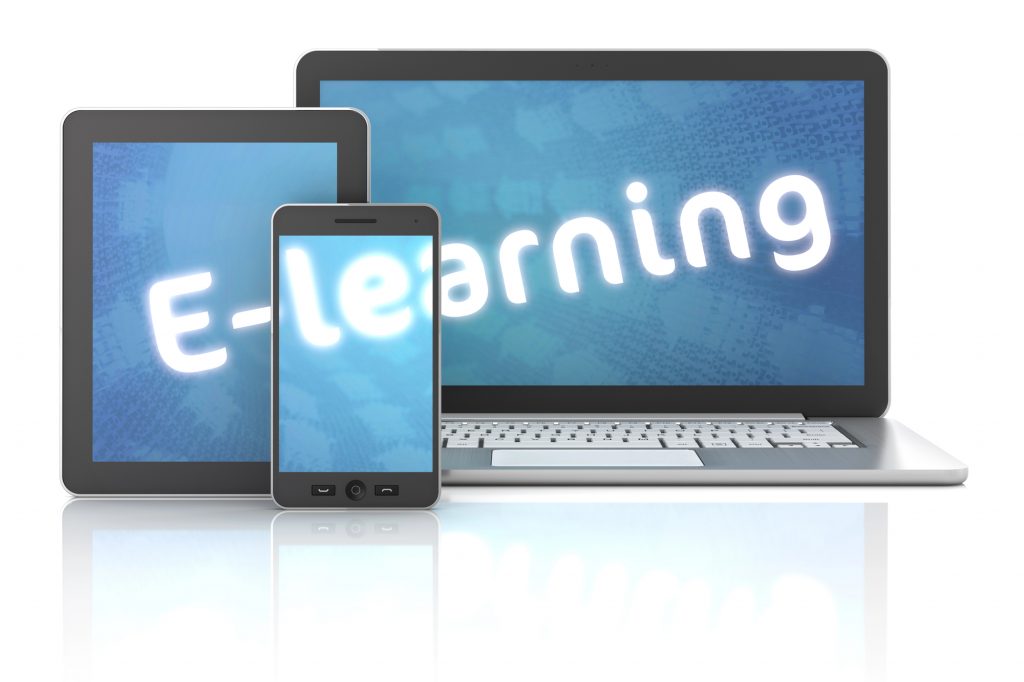Introduction
In today’s increasingly digital and environmentally conscious landscape, businesses are under pressure not just to perform financially, but to demonstrate responsibility across three additional dimensions: Environmental, Social, and Governance (ESG). Amid this shift, e-learning has emerged as a powerful tool not only for workforce development but also for advancing corporate sustainability goals. This article explores how e-learning in corporate environments contributes to sustainability, aligns with ESG frameworks, and aids in reducing carbon emissions, ultimately helping companies build a smarter, greener future.
Why e-learning matters
Corporate learning has long-since evolved beyond the traditional classroom. With dispersed teams and hybrid workplaces, digital platforms have become essential: they offer scalable, flexible, and personalised training solutions – critical for today’s fast-changing world. Importantly, e-learning, whatever the topic, helps businesses reduce their environmental impact in several key areas:
Delegates do not have to travel to a physical location; e-learning can be completed anywhere, including at home. Removing the commuting and travel emissions associated with classroom training significantly reduces a businesses’ scope 3 emissions.
Traditional training usually includes hard copies of handouts, booklets, survey sheets, and so on. These resources are emissions heavy, not just in their production but also in their disposal, whether that’s to landfill or recycling.
Classroom training may also involve the provision of food and beverages, all of which have their own carbon footprints, and lead to plastic and food waste.

e-Learning and ESG: A strategic fit
e-Learning does more than remove the carbon footprint of classroom training however: it fully aligns with ESG across all three pillars:
Environmental: e-Learning is the perfect tool for increasing staff awareness of sustainable practices, whether that’s for moving towards paperless environments or reducing food and other waste. It can play a pivotal role, and can help embed an organisation’s sustainability policy, which might otherwise go unheeded.

Social: Good e-learning includes audio voiceover and keyboard shortcuts. It can even be developed to react to voice commands. These accessibility features together with it being available wherever participants are physically located, and the fact it can be completed at different speeds according to the learner’s preference, makes e-learning extremely inclusive and provides every staff member access to training and continuous learning.
Governance: Unlike instructor-led training, which varies depending on both the participants and the instructor, and is difficult to track, e-learning ensures all learners receive the same quality training, with nothing ever left out or poorly explained. Furthermore learning can easily be tested by an inbuilt assessment, again in contrast with instructor-led sessions. When used with a robust LMS, such as LMS-X, participants can be reminded to complete training within a specified timeframes, and to repeat it according to a schedule. On-demand, real-time reporting closes the circle, providing organisations with powerful business intelligence, highlighting risk well as competence, where it may otherwise remain unseen.
The business case for e-learning
Due to its scalability, digital learning significantly reduces training costs. It further boosts ROI through improved knowledge retention and real-time analytics from the learning management system. The use of e-learning enhances corporate reputation, and, as discussed above, strongly supports ESG compliance.
Driving sustainable practices in the workplace: Real-world example
From 2020 onwards, Traineasy has worked with several organisations, including the Environment Agency, Defra and the UK’s Nuclear Restoration Services to develop e-learning for participants in their Carbon Literacy programmes.
In 2024, following our own staff training in Carbon Literacy, Traineasy created – and had accredited – an off-the-shelf version of the Carbon Literacy course aimed at SMEs. This extremely popular course has since been attended by delegates from a huge range of organisations, all of whom have gone on to take action to significantly reduce their workplaces’ emissions

Conclusion
e-Learning is more than a tool for training – it is a strategic asset for companies committed to ESG excellence and climate responsibility. Furthermore, by embedding sustainability into digital learning, organisations can reduce emissions, enhance social equity, and lead with purpose.
To find out more about Traineasy’s e-learning development services, LMS-X and/or our off-the-shelf catalogue of content, contact enquiries@traineasy.com.

